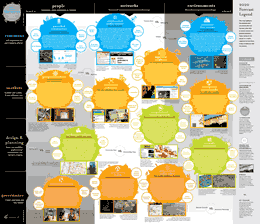The Future of Cities, Information, and Inclusion

A Planet of Civic Laboratories
The Future of Cities, Information, and Inclusion
Over the next decade, cities will continue to grow larger and more rapidly. At the same time, new technologies will unlock massive streams of data about cities and their residents. As these forces collide, they will turn every city into a unique civic laboratory—a place where technology is adapted in novel ways to meet local needs. This ten-year forecast map, The Future of Cities, Information, and Inclusion (PDF), charts the important intersections between urbanization and digitalization that will shape this global urban experiment, and the key tensions that will arise.
The explosive growth of cities is an economic opportunity with the potential to lift billions out of poverty. Yet the speed of change and lack of pro-poor foresight has led to a swarm of urban problems—poor housing conditions, inadequate education and health care, and racial and ethnic inequalities. The coming decade holds an opportunity to harness information to improve government services, alleviate poverty and inequality, and empower the poor. Key uncertainties are coming into view:
- What economic opportunities will urban information provide to excluded groups?
- What new exclusions might arise from new kinds of data about the city and its citizens?
- How will communities leverage urban information to improve service delivery, transparency, and citizen engagement?
As information technology spreads beyond the desktop into every corner of citizens' lives, it will provide a new set of tools for poor and excluded groups to re-engineer their relationship with government, the built environment, and each other.
Funded by a grant from the Rockefeller Foundation, IFTF has identified this challenge—harnessing data for development and inclusion—as a critical cross-sectoral urban issue for the next decade and beyond.
Realizing the opportunity from urban data will require combinatorial local innovation: continuous, rapid, dirt-cheap cycles of prototyping and testing. Already, the world’s urban poor are creating many usage and service innovations enabled by the basic capabilities of mobile phones. The future won’t just be a flow of advanced technologies from North to South, but a complex web of nimble experiments and good ideas. These experiments will create new templates for commons creation, design and planning, markets and governance at the scale of individual citizens, networks of citizens and institutions, and entire cityscapes. This map anticipates some of these templates, and points to emerging intersections of urban challenges and digital innovations.
This groundbreaking forecast describes thirteen such future intersections of urban information and social change:
- Quantified Communities
- Crowdsourced Public Services
- Actionable Data Streams
- Pro-Poor Interfaces
- Local, Social Commerce
- Hyperlocal Soapboxes
- Transparent Resource Webs
- On-Demand Resilience
- Computational Leadership Clouds
- Zoomable Panoramas
- Continuous Counting
- Anticipatory Health
- Democratized Public Safety
Join the Conversation
Media Coverage
- Greg Lindsay at Fast Company covers the map in "The Battle for Control of Smart Cities"
Download
To download a PDF of this research map:
To explore a zoomable online version:
Purchase
To purchase printed folded map copies [$35. each]:
Publication Date
Fall 2011
More Information
For more information about the Future of Cities, Information, and Inclusion project, contact Anthony Townsend or Sean Ness.




